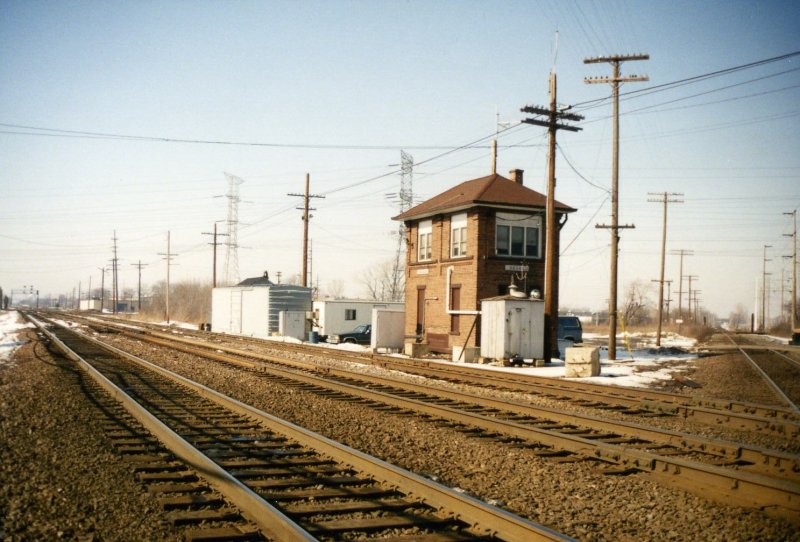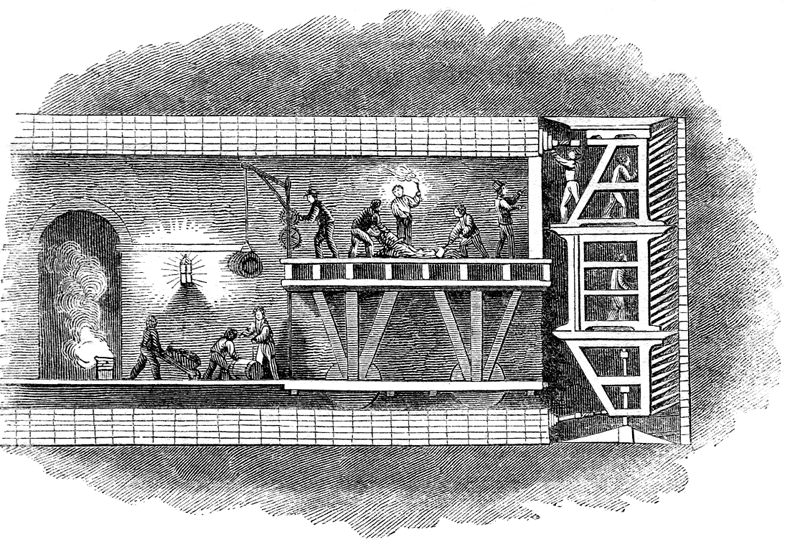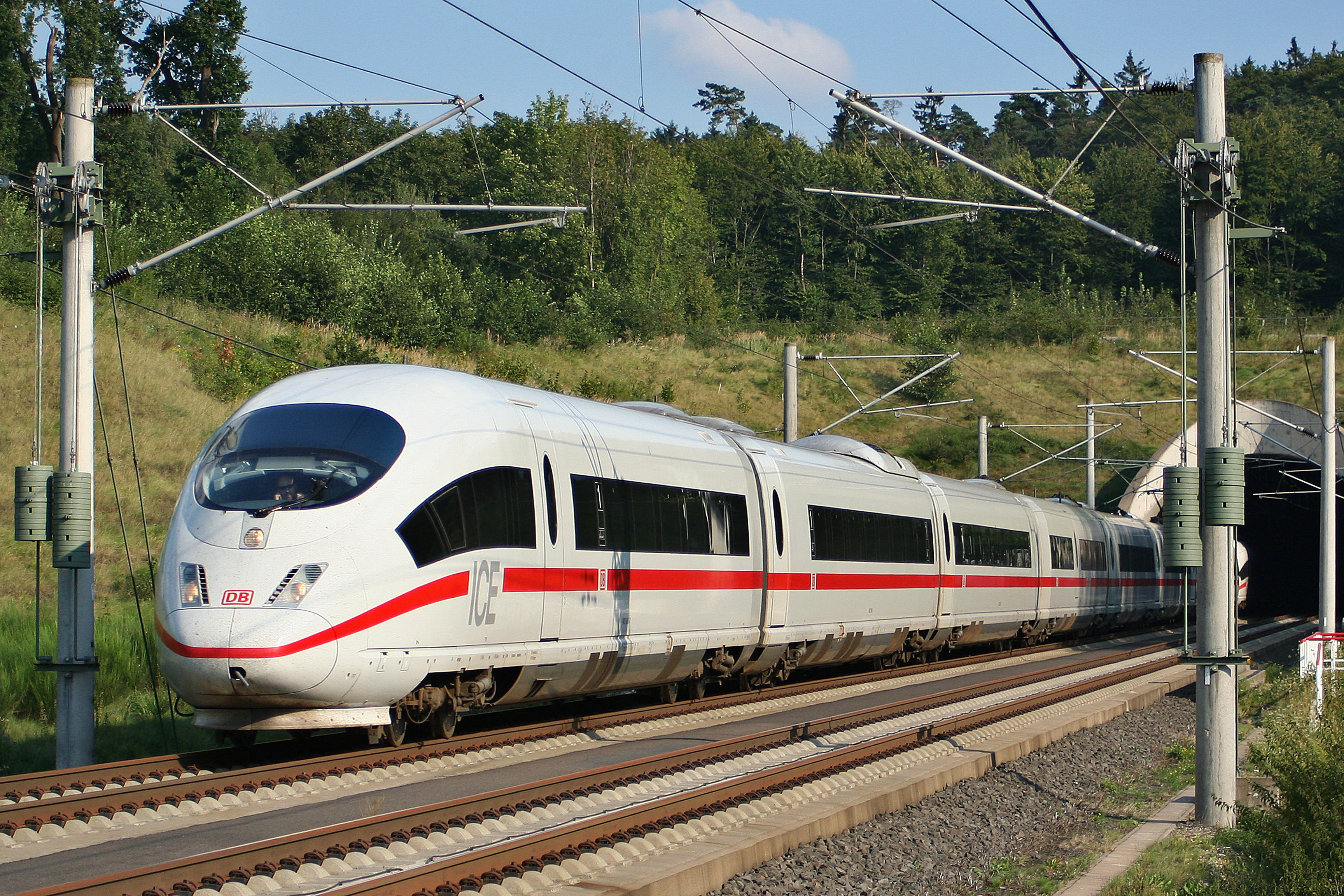|
München Moosach Station
Munich-Moosach station is a railway station in the Moosach district of Munich, the capital of the German state of Bavaria. It consists of an above-ground station for regional and Munich S-Bahn services and an underground station for the Munich U-Bahn. S-Bahn station Moosach station is located on the Munich–Regensburg railway. A single track branch connects to the Munich North Ring, which leads to the Munich North marshalling yard. On 3 November 1858, the Royal Bavarian Eastern Railway Company opened the line between Munich and Landshut. A year later, the line was extended to Regensburg. No train station was built in the then independent municipality of Moosach. On 28 September 1892, the line, which previously ran along the route of Landshuter Allee, was relocated to run to the east of the Nymphenburg Park through Moosach and south to München-Laim. The line was built as double-track and a new station was established in Moosach. After the incorporation of Moosach in Munich in ... [...More Info...] [...Related Items...] OR: [Wikipedia] [Google] [Baidu] |
Münchner Verkehrs- Und Tarifverbund
The (MVV; Munich Transport and Tariff Association) is the transit authority of the city of Munich, the capital of the German state of Bavaria. Its jurisdiction covers the city and its surrounding area, responsible for the Munich S-Bahn commuter trains, the Munich U-Bahn, the Munich tramway and buses. The MVV coordinates transport and fares in an area consisting of the city of Munich and, as of December 2024, ten surrounding districts as well as the independent city of Rosenheim. It is jointly owned by the state of Bavaria, the cities of Munich and Rosenheim, as well as the ten member districts. At its inception in 1971, the MVV consisted of the city of Munich as well as its eight surrounding districts (with only Bad Tölz-Wolfratshausen's northern half being integrated). This remained unchanged until December 10, 2023, when the districts of Rosenheim and Miesbach, the southern half of the district of Bad Tölz-Wolfratshausen, as well as the independent city of Rosenheim wer ... [...More Info...] [...Related Items...] OR: [Wikipedia] [Google] [Baidu] |
Relay Interlocking
In railway signalling, an interlocking is an arrangement of signal apparatus that prevents conflicting movements through an arrangement of tracks such as junctions or crossings. In North America, a set of signalling appliances and tracks interlocked together are sometimes collectively referred to as an ''interlocking plant'' or just as an ''interlocking''. An interlocking system is designed so that it is impossible to display a signal to proceed unless the route to be used is proven safe. Interlocking is a safety measure designed to prevent signals and points/switches from being changed in an improper sequence. For example, interlocking would prevent a signal from being changed to indicate a diverging route, unless the corresponding points/switches had been changed first. In North America, the official railroad definition of interlocking is: "''An arrangement of signals and signal appliances so interconnected that their movements must succeed each other in proper sequence''". ... [...More Info...] [...Related Items...] OR: [Wikipedia] [Google] [Baidu] |
Railway Stations In Munich
Rail transport (also known as train transport) is a means of transport using wheeled vehicles running in tracks, which usually consist of two parallel steel rails. Rail transport is one of the two primary means of land transport, next to road transport. It is used for about 8% of passenger and freight transport globally, thanks to its energy efficiency and potentially high speed.Rolling stock on rails generally encounters lower frictional resistance than rubber-tyred road vehicles, allowing rail cars to be coupled into longer trains. Power is usually provided by diesel or electric locomotives. While railway transport is capital-intensive and less flexible than road transport, it can carry heavy loads of passengers and cargo with greater energy efficiency and safety. Precursors of railways driven by human or animal power have existed since antiquity, but modern rail transport began with the invention of the steam locomotive in the United Kingdom at the beginning of the 19th ... [...More Info...] [...Related Items...] OR: [Wikipedia] [Google] [Baidu] |
Munich U-Bahn Stations
Munich is the capital and most populous city of Bavaria, Germany. As of 30 November 2024, its population was 1,604,384, making it the third-largest city in Germany after Berlin and Hamburg. Munich is the largest city in Germany that is not a state of its own. It ranks as the 11th-largest city in the European Union. The metropolitan area has around 3 million inhabitants, and the broader Munich Metropolitan Region is home to about 6.2 million people. It is the List of EU metropolitan regions by GDP#2021 ranking of top four German metropolitan regions, third largest metropolitan region by GDP in the European Union. Munich is located on the river Isar north of the Alps. It is the seat of the Upper Bavaria, Upper Bavarian administrative region. With 4,500 people per km2, Munich is Germany's most densely populated municipality. It is also the second-largest city in the Bavarian language, Bavarian dialect area after Vienna. The first record of Munich dates to 1158. The city ha ... [...More Info...] [...Related Items...] OR: [Wikipedia] [Google] [Baidu] |
Tunnelling Shield
A tunnelling shield is a protective structure used during the excavation of large, human-made tunnels. When excavating through ground that is soft, liquid, or otherwise unstable, there is a potential health and safety hazard to workers and the project itself from falling materials or a cave-in. A tunnelling shield can be used as a temporary support structure. It is usually in place for the short-term from when the tunnel section is excavated until it can be lined with a permanent support structure. The permanent structure may be made up of, depending on the period, bricks, concrete, cast iron, or steel. Although modern shields are commonly cylindrical, the first "shield", designed by Marc Isambard Brunel, was actually a large, rectangular, scaffold-like iron structure with three levels and twelve sections per level, with a solid load-bearing top surface. The structure protected the men from cave-ins as they laboured within it, digging the tunnel out in front of the shield. Histor ... [...More Info...] [...Related Items...] OR: [Wikipedia] [Google] [Baidu] |
Slurry Wall
A slurry wall is a civil engineering technique used to build reinforced concrete walls in areas of soft earth close to open water, or with a high groundwater table. This technique is typically used to build diaphragm (water-blocking) walls surrounding tunnels and open cuts, and to lay foundation (engineering), foundations. Slurry walls are used at Superfund sites to contain the waste or contamination and reduce potential future migration of waste constituents, often with other waste treatment methods. Slurry walls are a "well-established" technology but the decision to use slurry walls for a certain project requires geophysical and other engineering studies to develop a plan appropriate for the needs of that specific location. Slurry walls may need to be used in conjunction with other methods to meet project objectives. Construction While a trench is being excavated to create a form for a wall, it is simultaneously filled with slurry (usually a mixture of bentonite and water). ... [...More Info...] [...Related Items...] OR: [Wikipedia] [Google] [Baidu] |
Station Box
A station box is a term in the construction industry: It describes a box-like underground structure for a transportation system, for example a metro or tube station. Station boxes are built in two methods – "top-down" or "bottom-up". In the "bottom-up" method, a chamber as large as the station structure is dug into the ground into which the station is built. Poured concrete or pre-cast panels are then used to form the various levels and internal structures, similar to the construction of the underground basements of high rise buildings. When the construction is complete, this ''station box'' is covered again up to the street level. In the "top-down" method, a depth is excavated, a concrete slab is laid, and then excavation continues downwards to the base of the ''station box''. At the end of excavation, a similar result to the "bottom-up" method is obtained – with the concrete slabs and supports for the various levels of the station already constructed. When building an underg ... [...More Info...] [...Related Items...] OR: [Wikipedia] [Google] [Baidu] |
Olympia-Einkaufszentrum
The Olympia-Einkaufszentrum (OEZ) or Olympia shopping mall is a shopping mall opened in 1972. It is located in the Moosach district of Munich, Germany. The name comes from the simultaneous construction of the adjacent home of the press for the Summer Olympics in 1972. In 1993–94, the shopping centre was extended and modernized by the Munich architects Hans Baumgarten and Curt O. Schaller. Shops The sales area of the OEZ, which belongs to the ECE Project Management, covers 56,000 m2. There are around 135 shops spread across two floors, with three department stores, several major clothing chains, and many grocery stores, service outlets, restaurants and cafes. Transport The shopping centre is served by Olympia-Einkaufszentrum station on the Munich U-Bahn The Munich U-Bahn () is an Railway electrification system, electric rail Rapid transit, rapid transit network in Munich, Germany. The system began operation in 1971, and is operated by the municipally owned Münchner Verkehr ... [...More Info...] [...Related Items...] OR: [Wikipedia] [Google] [Baidu] |
Deutsche Bahn
(, ; abbreviated as DB or DB AG ) is the national railway company of Germany, and a state-owned enterprise under the control of the German government. Headquartered in the Bahntower in Berlin, it is a joint-stock company ( AG). DB was founded after the merger between Deutsche Bundesbahn and the East German Deutsche Reichsbahn in 1994 after the unification of Germany and has been operating ever since. is the second-largest transport company in Germany, after the German postal and logistics company / DHL. DB provides both long-distance and regional transport, serving around 132 million long distance passengers and 1.6 billion regional passengers in 2022. In 2022, DB transported 222 million tons of cargo. Company profile The group is divided into several companies, including '' DB Fernverkehr'' (long-distance passenger), '' DB Regio'' (local passenger services) and '' DB Cargo'' (rail freight). The Group subsidiary '' DB InfraGO'' also operates large parts of the German ... [...More Info...] [...Related Items...] OR: [Wikipedia] [Google] [Baidu] |
Alex (rail Service)
Alex is a given name. Similar names are Alexander, Alexandra, Alexey or Alexis. People Multiple *Alex Brown (other), multiple people * Alex Cook (other), multiple people * Alex Forsyth (other), multiple people *Alexander Gardner (other), multiple people *Alex Gordon (other), multiple people *Alex Harris (other), multiple people *Alex Jones (other), multiple people *Alexander Johnson (other), multiple people * Alex Lee (other), multiple people *Alex Taylor (other), multiple people Politicians *Alex Allan (born 1951), British diplomat *Alex Attwood (born 1959), Northern Irish politician *Alex Kushnir (born 1978), Israeli politician *Alex Salmond (1954–2024), Scottish politician, former First Minister of Scotland Baseball players * Alex Avila (born 1987), American baseball player *Alex Bregman (born 1994), American baseball player *Alex Freeland (born 2001), American baseball player *Alex Ga ... [...More Info...] [...Related Items...] OR: [Wikipedia] [Google] [Baidu] |
Regional-Express
In Germany, Luxembourg and Austria, the Regional-Express (; RE, or in Austria: REX) is a type of regional train. It is similar to a semi-fast train, with a top speed of and an average speed of about as it calls at fewer stations than ''Regionalbahn'' (in Austria: '' Regionalzug'') or S-Bahn trains, but stops more often than ''Intercity'' or ''Intercity Express'' services. Operations The first Regional-Express services were operated by DB Regio, though since the liberalisation of the German rail market (''Bahnreform'') in the 1990s many operators have received franchise rights on lines from the federal states. Some private operators currently operate trains that are similar to a Regional-Express service, but have decided to use their own names for the sake of brand awareness instead. Regional-Express services are carried out with a variety of vehicles such as DMUs (of Class 612), EMUs (of Class 425 or 426) or, most commonly, electric or diesel locomotives with doub ... [...More Info...] [...Related Items...] OR: [Wikipedia] [Google] [Baidu] |





